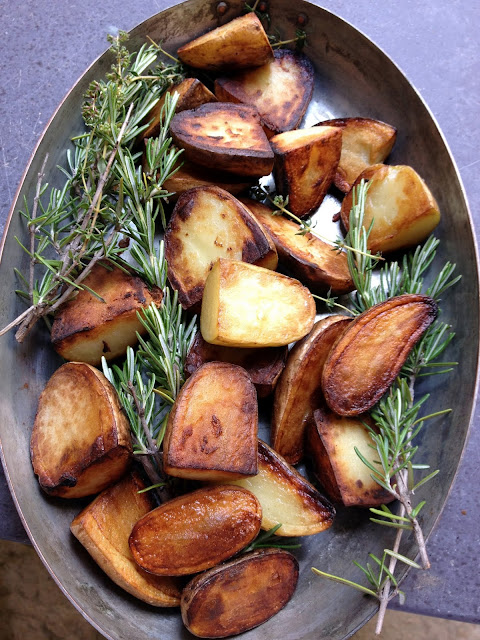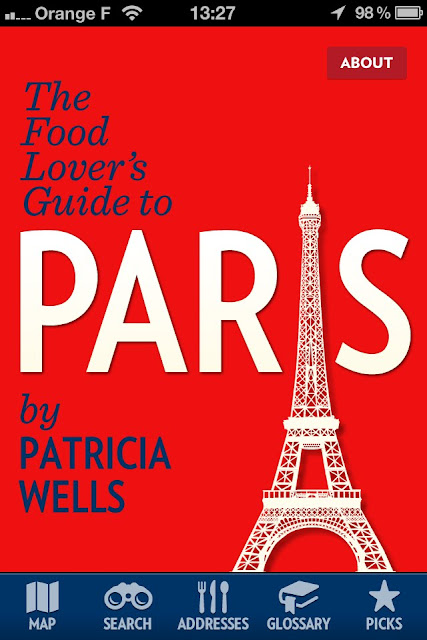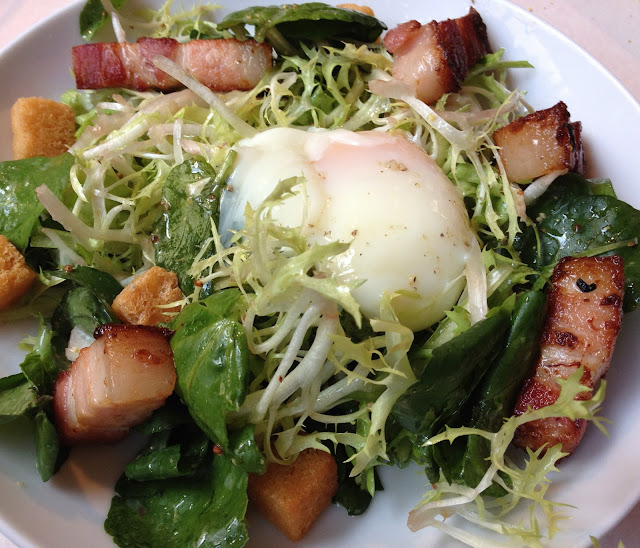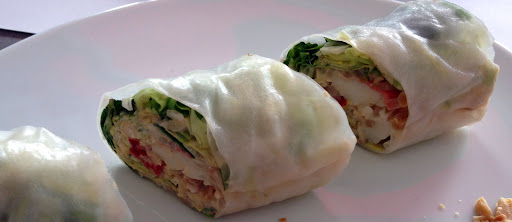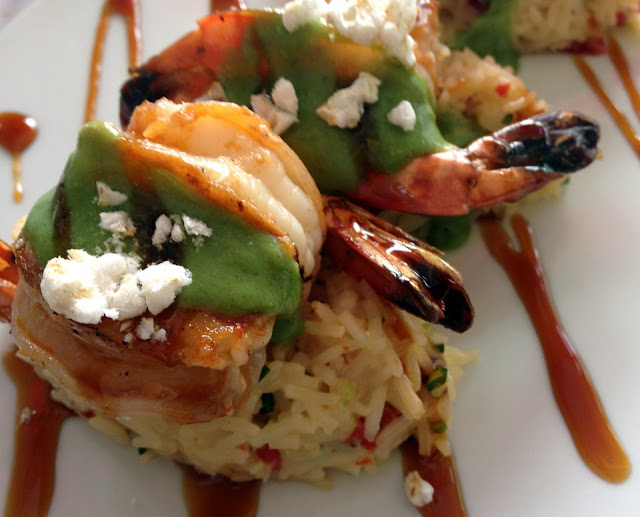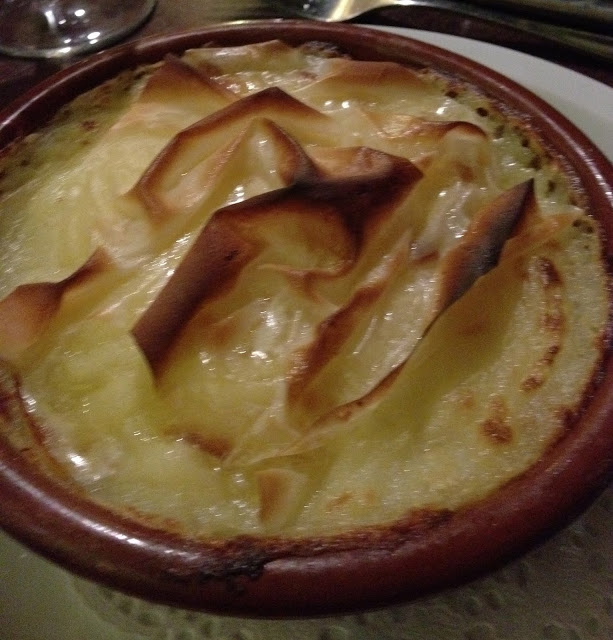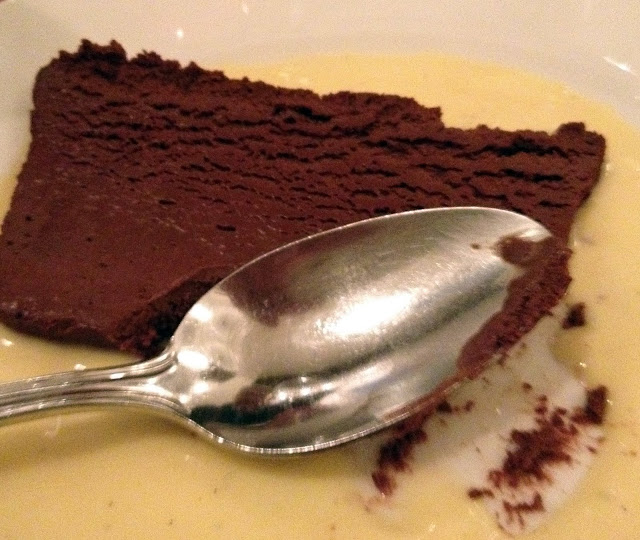Anne-Sophie Pic's week-old La Dame de Pic near the Louvre is the sensation of the rentrée, a pure and calming all-white space, with crisp white linen table runners, sturdy modern wooden tables, her black signature knives from Forge de Laguiole in the Auvergne, all punctuated by a series of vases holding single, long-stemmed pink roses. The restaurant -- whose name translates as queen of spades -- is not a place for compromise. Nor is her herb, spice, and aroma-filled menu. Like the dining room itself, it offers a balance of elegance and comfort, haute-cuisine and everyday fare, all bearing her unique, ultra-modern signature. She sports her feminine role, but does not flaunt it or play it cute. Ingredients are impeccable, preparations are complicated but not overdone, and the taste theme throughout is one of softness and smoothness with a required touch of crunch. I would never think of pairing warm oysters with cauliflower, but Anne-Sophie offers a regal, cloud-like presentation of warm Gillardeau oysters bathed in a frank and fragrant cream of cauliflower and jasmine, surprising as well as satisfying. Sardines are paired with some of the best tasting leeks I have witnessed, punctuated by thé matcha, making for an exotic turn on the everyday fresh Mediterranean sardine.
Bresse chicken breast arrives meltingly tender, paired with a blend of cooked and raw spinach and a touch of finely sliced couteaux (razor clams) adding a bit of texture to the soft greens. But for me, the triumph of the meal was the vibrant pea soup (le petit pois de montagne) flavored with a touch of réglisse and galanga, and tasting as though the peas had been picked in palace gardens only seconds before (photo). Her flavored butters are not to be missed -- one anise, another thé matcha -- to be carefully if not sparingly spread on whole wheat or rye-miso bread. The cheese course consists of three perfectly aged picodon goat's milk cheeses from the Anne-Sophie's home Département of the Drôme --- one young, one slightly aged, one firm and well-aged -- served with a delicate rosemary gelatin and another gelatin of beer and honey. Although I am not a huge fan of baba au rhum (usually too boozy) hers is a delicate delight: tiny mouthfuls of light baba, paired with a burst-in-your-mouth passion fruit creation.The staff is casually but impeccably dressed in crisp blue jeans and blue shirts. And they all actually seem to be having a wonderful time serving the guests at La Dame de Pic. A tiny powerhouse of a woman with endless energy, Anne-Sophie will of course continue running her Michelin three-star restaurant in Valence, south of Lyon. She says she'll probably be in Paris a day or so a week. Most of the youthful chefs -- cooking in a beautiful all plancha and induction open kitchen overlooking the street -- spent the summer working in Valence to learn the tricks of the trade. They seem to be playing their cards right, as well.
La Dame de Pic, 20 rue du Louvre, Paris 1. Métro: Louvre-Rivoli. Telephone: +33 1 42 60 40 40. 49-euro lunch menu. Other menus at 79, 100 and 120 euros. Open Monday-Saturday. Closed Sunday. contact@ladamedepic.fr and www.ladamedepic.fr




